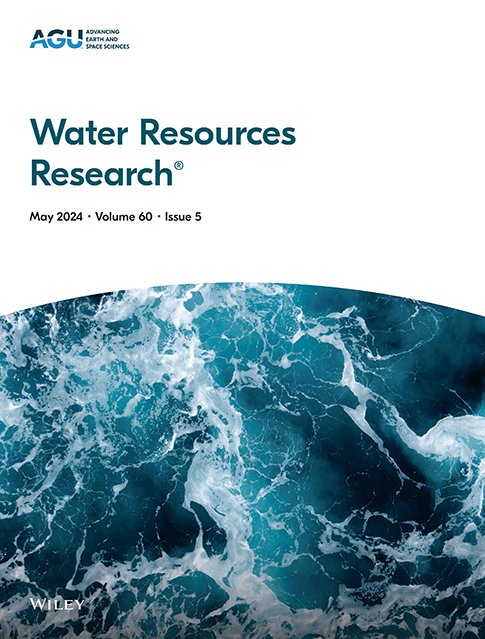多尺度可微分物理信息机器学习增强了高分辨率国家尺度水模型
IF 5
1区 地球科学
Q2 ENVIRONMENTAL SCIENCES
引用次数: 0
摘要
国家水模型(NWM)是洪水预报、规划和水管理的关键工具。NWM面临的主要挑战是面对大数据时的校准和参数区域化。我们提出了两种新版本的高分辨率(~ 37 km2)可微模型(一种混合模型):一种具有隐式的单元水图式路线,另一种具有河网中明确的Muskingum-Cunge路线。前者预测流域出水口的流量,而后者则呈现一个离散化的产品,无缝覆盖美国(CONUS)的河流。这两个版本都使用神经网络来提供多尺度参数化和基于过程的方程,以提供结构主干,同时(“端到端”)在CONUS的2,807个盆地上进行训练,并在4,997个盆地上进行评估。这两个版本都显示出巨大的潜力,可以提高未来广泛校准和未测量站点的NWM性能:所有4,997个盆地的每日纳什-苏特克利夫效率中位数从NWM3.0的0.48提高到0.68左右。由于它们解决了空间异质性,这两个版本都极大地改善了CONUS西部和Prairie Pothole地区的模拟,这是一个长期存在的建模挑战。Muskingum-Cunge版本进一步提高了10000平方公里流域的性能。总的来说,我们的研究结果表明,基于神经网络的参数化可以提高NWM的性能,提供可操作的洪水预测,同时保持可解释性和多变量输出。建模系统支持基本模型接口(BMI),可以与下一代NWM无缝集成。我们还提供了conus尺度的水文数据集,供进一步评估和使用。本文章由计算机程序翻译,如有差异,请以英文原文为准。
High-Resolution National-Scale Water Modeling Is Enhanced by Multiscale Differentiable Physics-Informed Machine Learning
The National Water Model (NWM) is a key tool for flood forecasting, planning, and water management. Key challenges facing the NWM include calibration and parameter regionalization when confronted with big data. We present two novel versions of high-resolution (∼37 km2) differentiable models (a type of hybrid model): one with implicit, unit-hydrograph-style routing and another with explicit Muskingum-Cunge routing in the river network. The former predicts streamflow at basin outlets whereas the latter presents a discretized product that seamlessly covers rivers in the conterminous United States (CONUS). Both versions use neural networks to provide a multiscale parameterization and process-based equations to provide a structural backbone, which were trained simultaneously (“end-to-end”) on 2,807 basins across the CONUS and evaluated on 4,997 basins. Both versions show great potential to elevate future NWM performance for extensively calibrated as well as ungauged sites: the median daily Nash-Sutcliffe efficiency of all 4,997 basins is improved to around 0.68 from 0.48 of NWM3.0. As they resolve spatial heterogeneity, both versions greatly improved simulations in the western CONUS and also in the Prairie Pothole Region, a long-standing modeling challenge. The Muskingum-Cunge version further improved performance for basins >10,000 km2. Overall, our results show how neural-network-based parameterizations can improve NWM performance for providing operational flood predictions while maintaining interpretability and multivariate outputs. The modeling system supports the Basic Model Interface (BMI), which allows seamless integration with the next-generation NWM. We also provide a CONUS-scale hydrologic data set for further evaluation and use.
求助全文
通过发布文献求助,成功后即可免费获取论文全文。
去求助
来源期刊

Water Resources Research
环境科学-湖沼学
CiteScore
8.80
自引率
13.00%
发文量
599
审稿时长
3.5 months
期刊介绍:
Water Resources Research (WRR) is an interdisciplinary journal that focuses on hydrology and water resources. It publishes original research in the natural and social sciences of water. It emphasizes the role of water in the Earth system, including physical, chemical, biological, and ecological processes in water resources research and management, including social, policy, and public health implications. It encompasses observational, experimental, theoretical, analytical, numerical, and data-driven approaches that advance the science of water and its management. Submissions are evaluated for their novelty, accuracy, significance, and broader implications of the findings.
 求助内容:
求助内容: 应助结果提醒方式:
应助结果提醒方式:


